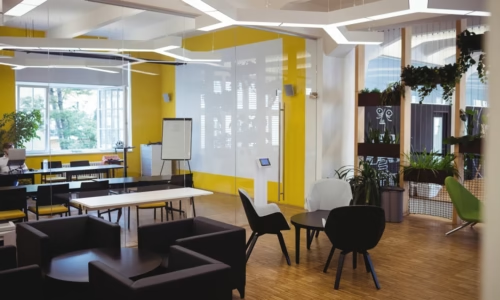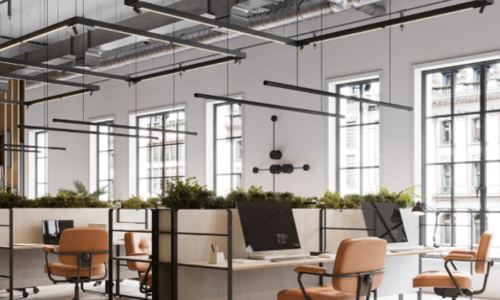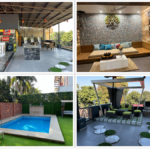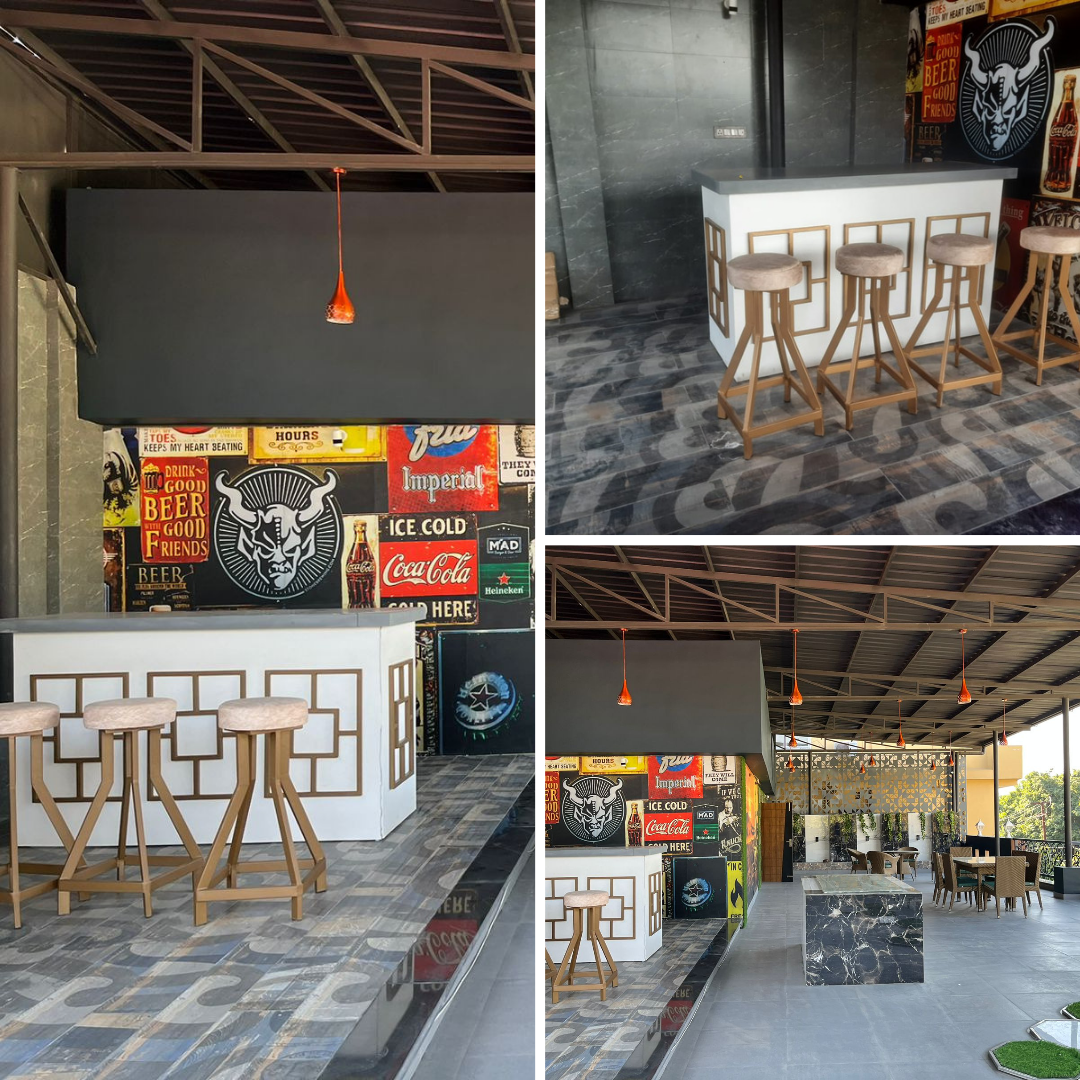Office interiors refer to the design, layout, and arrangement of everything inside an office. This includes the furniture, lighting, color schemes, wall designs, plants, air quality, and even the way spaces are divided for work and relaxation. The goal of office interiors is to provide a functional yet comfortable environment that helps employees work efficiently.
Unlike traditional office designs where only basic desks and chairs were considered important, modern office interiors are designed with human well-being in mind. This involves creating spaces that reduce stress, improve focus, and promote collaboration. A well-planned interior can become a silent tool that supports employee satisfaction and long-term health.
Importance of Office Interiors for Employee Well-Being
Employee well-being is not just about health benefits or fitness programs. It is also about the daily experiences workers have inside the office. Spending 7 to 9 hours each day in a poorly designed space can lead to stress, fatigue, and health problems. On the other hand, a thoughtfully designed interior can increase comfort, energy, and motivation.
Here are some major reasons why office interiors are important for employee well-being:
-
Boosts productivity by reducing distractions and discomfort.
-
Improves mental health by creating a calm and balanced environment.
-
Supports physical health by offering ergonomic furniture and proper lighting.
-
Encourages collaboration through well-designed shared spaces.
-
Builds company culture by reflecting values and innovation through design.
The Role of Lighting in Employee Health
Lighting is one of the most crucial factors in office interiors. Poor lighting can cause eye strain, headaches, and fatigue, while proper lighting can uplift mood and improve focus. Natural light, in particular, has a positive impact on mental health. Studies show that employees exposed to natural light feel more energetic and less stressed.
Artificial lighting should also be designed to reduce glare and shadows. Adjustable desk lamps, LED panels, and well-placed windows can make a huge difference. When employees work in a well-lit environment, they are less likely to feel tired and more likely to stay motivated throughout the day.
Office Furniture and Ergonomics
Furniture plays a central role in employee comfort. Chairs and desks that are not ergonomically designed can cause back pain, neck stiffness, and other long-term health issues. Ergonomic office furniture is created to support posture, reduce strain, and encourage movement.
A good ergonomic chair provides lumbar support, adjustable height, and proper cushioning. Standing desks or adjustable desks also help reduce the negative effects of sitting for long hours. By investing in ergonomic furniture, companies can reduce sick days and improve employee satisfaction.
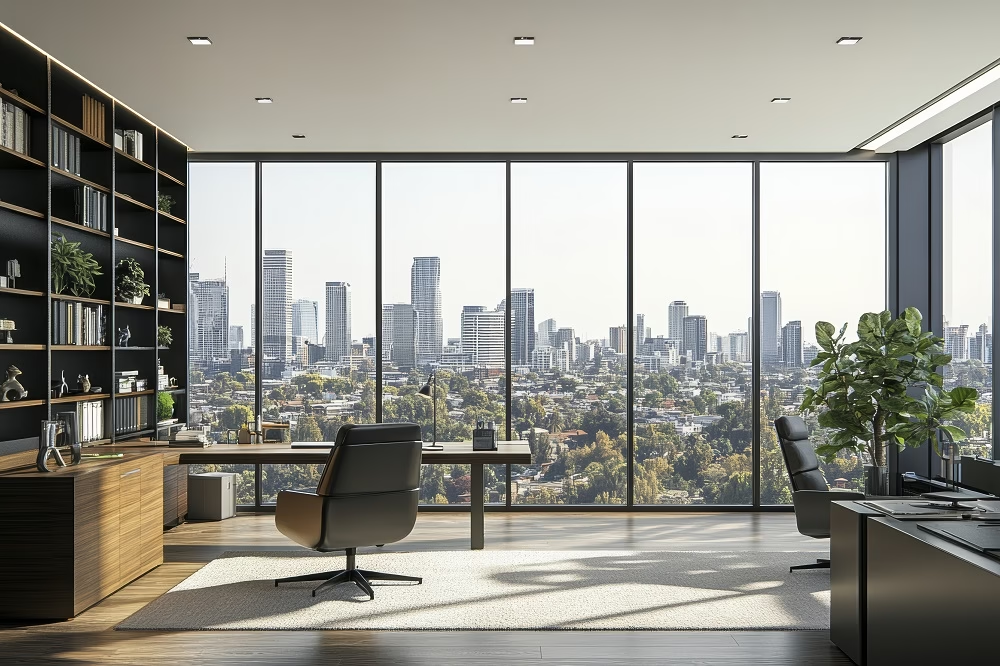
Colors and Their Impact on Mood
Colors in office interiors are not just about decoration. They have psychological effects on employees. For example:
| Color | Impact on Employees |
|---|---|
| Blue | Creates calmness and focus |
| Green | Promotes relaxation and balance |
| Yellow | Increases creativity and positivity |
| Red | Boosts energy but can cause stress if overused |
| White | Provides cleanliness but may feel too plain |
Choosing the right color schemes can make the office a more engaging and motivating place. For example, a creative agency may use bright colors to stimulate ideas, while a finance office may prefer calm tones to maintain focus.
Indoor Plants and Air Quality
The presence of plants in office interiors has been linked to better employee well-being. Plants not only improve air quality but also bring a natural touch that reduces stress. Cleaner air means fewer health problems like headaches or allergies.
Studies suggest that employees working in offices with greenery feel more satisfied and productive. Even small plants on desks or vertical gardens on walls can make a significant difference. Natural elements remind employees of outdoor environments, which can make them feel more relaxed during work.
Space Design and Collaboration
The way office space is designed can also affect teamwork and social well-being. Open spaces encourage communication and collaboration, but they should be balanced with private areas where employees can focus. Too much openness may lead to noise and distractions, while too much privacy can reduce interaction.
Modern office interiors often include breakout zones, relaxation corners, and small meeting areas. These spaces allow employees to connect, exchange ideas, and take short breaks from work. A balanced design creates both personal and collaborative spaces, which supports mental well-being.
Technology and Smart Interiors
Technology also plays a role in modern office interiors. Smart lighting systems, noise-canceling setups, and air conditioning controls can enhance comfort. For example, an office equipped with smart temperature control reduces discomfort caused by being too hot or too cold.
Additionally, digital workspaces and soundproof meeting rooms help employees work without stress. Smart office designs show that technology, when combined with interior planning, creates an efficient and healthier work environment.
The Psychological Impact of Office Interiors
Employee well-being is strongly connected to mental health. A cluttered, dark, or unorganized office can increase stress levels. On the other hand, a clean, well-structured, and positive environment can improve motivation.
The workplace environment has a direct link with job satisfaction. Employees are more likely to stay loyal to a company when they feel comfortable and valued in their work environment.
Even small details like wall art, creative layouts, and relaxation areas can improve how employees feel about coming to work. A positive interior design acts as silent motivation every day.
Case for Break Areas and Rest Spaces
Break areas in offices are not a waste of space. They actually contribute to employee well-being by giving workers a place to recharge. Comfortable couches, coffee stations, or even game zones can reduce stress and improve energy levels.
Break areas also encourage social interactions, which build stronger team relationships. When employees have a chance to relax, they return to work with fresh energy and better focus. Research suggests that regular breaks improve overall performance and reduce burnout.
How Poor Interiors Can Harm Well-Being
To understand the importance of good interiors, it is also important to know the negative effects of poor design. Some of the common issues caused by poorly planned interiors include:
-
Stress due to noisy and crowded spaces.
-
Health issues like back pain and headaches.
-
Lack of motivation due to dull or poorly lit areas.
-
Lower productivity due to uncomfortable furniture.
-
Negative company culture caused by lack of collaboration spaces.
Poor workplace environments can also lead to occupational health risks. This shows how critical good interior design is for employee well-being.
Long-Term Benefits for Companies
Investing in better office interiors is not only good for employees but also for companies. Healthy and satisfied employees are more productive, loyal, and motivated. This reduces turnover and increases business performance.
Companies with attractive interiors also find it easier to attract new talent. Many job seekers today look for workplaces that care about employee well-being. Therefore, office interiors also become a reflection of company values and reputation.
Also Read:
- What Is a Mood Board in Interior Design?
- What Is Modern Classic Interior Design?
- What is Green Interior Design?
- What Are the Different Materials Used for Interior Design?
- Is Interior Architecture the Same as Interior Design?
Conclusion
Office interiors are much more than furniture and walls. They shape how employees feel, think, and perform every single day. By focusing on lighting, ergonomics, colors, plants, air quality, and balanced spaces, companies can support employee well-being effectively.
A well-designed office not only improves health but also builds a positive work culture. In the long run, investing in office interiors is a smart decision that benefits both employees and employers.
Just like physical health programs, interiors should be considered part of employee well-being strategies. By creating spaces that inspire comfort, creativity, and focus, organizations can ensure a healthier and happier workforce.

